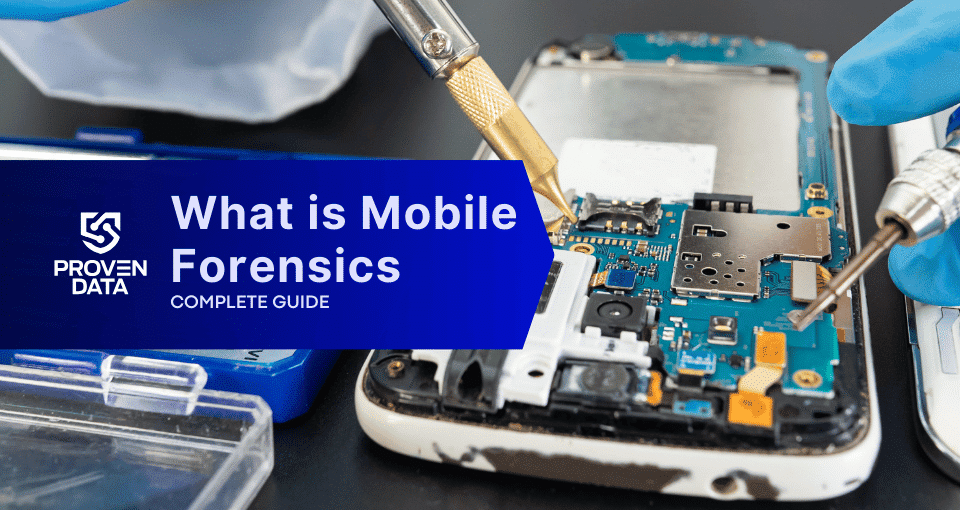From work uses to personal needs, mobile phones are like extensions of ourselves. With a few touches on our mobile screens, we can plan our routine, pay our bills, shop for groceries, and monitor our houses. This generates a great deal of information, data that investigators can use as evidence during criminal and legal cases.
Mobile forensics has become a crucial discipline in criminal justice and civil litigation. It offers powerful tools for extracting, analyzing, and presenting digital evidence from smartphones, tablets, and other portable electronic devices.
Why mobile forensics is important
Mobile devices contain a wealth of information that can provide critical insights into an individual’s activities, communications, and whereabouts. This data can be instrumental in solving crimes, building legal cases, and uncovering the truth in various scenarios.
Understanding the capabilities and limitations of mobile device forensics allows digital forensics analysts to leverage this powerful tool effectively while ensuring that evidence is collected and presented in a manner that meets legal standards and can withstand scrutiny in court.
What type of evidence can be found on a cell phone
Once a forensic analyst has access to a phone they need to search through legally, they can extract various types of evidence, including:
- Text messages and chat logs
- Call history and contact lists
- Financial information
- Email communications
- Photos and videos
- Location data and GPS coordinates
- Web browsing history
- App usage and data
- Calendar entries and notes
- Deleted data that has been recovered
Only a forensic analyst has the training to properly find and log any evidence so that’s admissible in a court of law.
How mobile device forensics works
The process of mobile forensics typically involves four key steps that might change depending on the service provider
1. Seizure and preservation
The first step in mobile device forensics is to seize and preserve the device properly by following strict protocols to ensure the integrity of the evidence. Investigators must be careful not to alter the device’s state, which could potentially compromise the data stored within.
One crucial aspect of this stage is isolating the device from network connections. This is often accomplished using Faraday bags or boxes, which block electromagnetic signals and prevent remote access or data wiping. Additionally, investigators may need to keep the device powered on to avoid triggering security measures that could lock them out.

2. Data extraction
Once the device is secured, forensic experts use specialized tools and techniques to extract data from the mobile device through various methods, depending on the device type, operating system, and security measures in place.
Logical extractions typically involve base levels of the phone data, such as contacts, photos, and apps present. However, this oftentimes does not include access to internal databases, which are crucial to forensic investigations. This is why analysts will collect physical extractions. Physical extractions are bit-by-bit copies of the entire memory, which allows the discovery of critical data, including metadata, in-depth message history, individual app usage, deleted data, and more.
3. Data analysis
After extraction, the raw data must be analyzed to identify relevant information. Forensics professionals apply specialized software to parse and organize the extracted data, making it searchable and easier to navigate.
While tools like Cellebrite, Axiom, and Encase are revolutionary, they are only as good as the analysts using them. To effectively analyze mobile phones, experts must be well-versed in concepts such as hex analysis, file carving, database management, file systems, data recovery, and more.
4. Reporting and presentation
The final stage involves compiling the findings into a comprehensive report that can be used in legal proceedings or investigations.
This report must be clear, concise, and able to withstand scrutiny in court. It should detail the methods used to extract and analyze the data and present the findings in a way that makes sense to analysts and even legal professionals. Still, it also needs to be clear enough that even a jury of non-technical individuals can understand it.
Mobile forensics applications in legal and criminal matters
In criminal cases, mobile device forensics can provide essential evidence to establish timelines, prove communications between suspects, and place individuals at specific locations. For example, in the 2013 Boston Marathon bombing case, cell phone records and GPS data were instrumental in tracking the suspects’ movements and building a case against them.
In civil cases, cell phone device forensics can uncover evidence of fraud, intellectual property theft, or contract violations. Companies may use cell phone device forensics to investigate employee misconduct, data breaches, or other internal issues.
Challenges in mobile device forensics
While mobile device forensics offers powerful capabilities, it faces several challenges, mostly due to technological evolution and data privacy laws and regulations. This also raises legal and ethical considerations regarding using mobile data during investigations.
Legal and ethical challenges
Mobile device forensics must navigate complex legal and ethical issues surrounding privacy, consent, and the admissibility of evidence. To bypass this, investigators must ensure that their methods comply with relevant laws and that evidence is collected in a manner that courts will accept.
Even one undocumented or illegal finding can have the entire case dismissed. This is why the best analysts know not only student technological concepts but also the procedures and policies of the Litigation system.
Rapid technological advancement
One of the most fascinating elements of Digital Forensics as a whole is that it has only been a formal industry since the early 2000s. The field is constantly evolving and growing as our world becomes more technical. New operating system versions, hardware changes, and security features can render existing forensic methods obsolete, requiring ongoing research and development.
Data volume and complexity
The sheer amount of data stored on modern mobile devices can be overwhelming. Forensic analysts must sift through vast information to find relevant evidence, which can be time-consuming and resource-intensive.
Due to this issue, the best analysts must also have investigative experience to understand various slang terminology.
Since analysts often race against the clock, they need to strategically determine which parts of the phone need to be analyzed.







